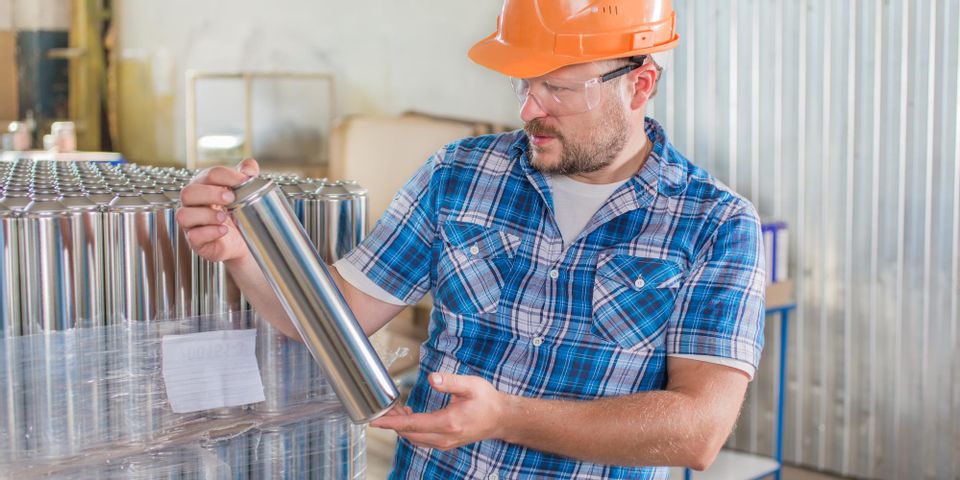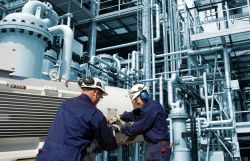How Do ERW, DOM, & Seamless Tube Welding Differ?

When working with a metal supplier to find the best product for your needs, you’ll find that welding processes differ greatly. Understanding these processes and the products they create is key to making the right selection, whether you’re building vehicle components or require piping for an oil and gas application. Here’s a look at three standard processes to help you make an informed decision.
Electric Resistance Welded (ERW)
This welding process begins with a coiled sheet of steel that’s unfurled by a piece of equipment called a leveler. As the leveler flattens the coil into a workable piece of metal, edges are also trimmed to ensure a stronger weld.
Rollers are used to form the sheet in the desired shape while the edges are heated to a high temperature using an electric current. As these newly cut edges are welded, a line of excess metal, which is referred to as the flash, will form. This flash is removed during processing to create a smooth profile on the tube. The tube is cut into the specified length then reheated, which boosts the strength of the weld.
The final ERW tube or pipe can be used in numerous applications. Some common uses include fence posts, pipes for water or gas conveyance, tubing that surrounds telecommunication cables, and agricultural applications. Benefits or ERW include resistance to corrosion, durability, strength, and malleability.
Drawn Over Mandrel (DOM)
ERW and DOM welding processes are exactly the same up to the finishing stage. With DOM, a mandrel, which is a metal rod or cylinder, is placed inside the tube after the flash is removed. As the tube is cold-formed with the mandrel inside, the outside and inside diameters will be set to the customer’s exact specifications. Despite the name, cold-forming simply means that metal is processed at regular air temperature.
DOM tubes are used frequently in the automotive industry for roll cages, power seat control mechanisms, engine mounts, axles, and many other components. They can also be used in construction equipment, such as augers, or to create columns during building construction. Cold-forming over a mandrel ensures consistency when it comes to wall thickness. The weld strength is incredibly robust while the surface of the tubing is smooth and blemish-free.
Seamless Tube
 The process of creating a seamless tube is quite different from ERW and DOM. Instead of cutting and forming a sheet of metal to the desired specifications before it’s welded, seamless tubes are created using a process called extrusion, which begins with a solid steel bar. The bar is pierced in the center, which renders it into its tube form. This is why the resulting tube is seamless, whereas ERW and DOM tubing have small, practically invisible seams.
The process of creating a seamless tube is quite different from ERW and DOM. Instead of cutting and forming a sheet of metal to the desired specifications before it’s welded, seamless tubes are created using a process called extrusion, which begins with a solid steel bar. The bar is pierced in the center, which renders it into its tube form. This is why the resulting tube is seamless, whereas ERW and DOM tubing have small, practically invisible seams.
Seamless tubes can be created using a cold-drawn or hot-finish process. Cold-drawn creates tubes that have higher dimensional processes while also offering a smooth outer surface. With hot-finish, tubes can be created in a variety of cost-effective sizes. Seamless tubes have numerous uses, including gas chromatography equipment, shipbuilding, control lines for the oil and gas industry, and chemical processing.
If you need more help finding the right type of tubing for a project, consulting with an experienced metal supplier is a must. Serving customers since 1986, American Metal Supply has a reputation for meeting and exceeding the expectations of all customers. Their expansive inventory includes tubes, sheets, structural steel, galvanized, cold finish, and even plastics. They also insist on the very best in quality control to deliver exactly what you expect. Visit this trusted metal supplier online to check out their selection of tubing. Customers in Louisville, KY, can call (502) 634-4321 while the Cincinnati location can be reached at (513) 396-6600.
About the Business
Have a question? Ask the experts!
Send your question

